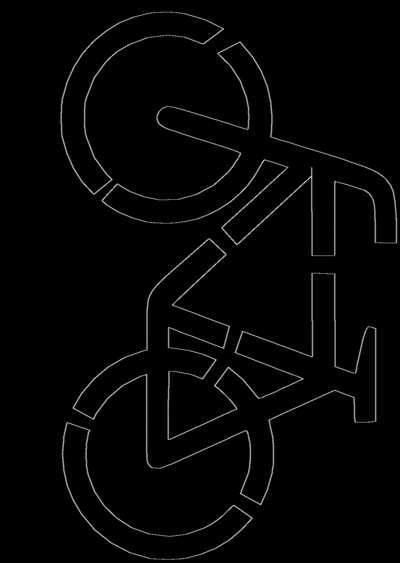C. Laser CNC - Lines
|
After receiving the CNC, you realize the software supplied by the vendor
will not meet the high requirements mandated by the complexity of the
anti-zombie weapon technology. You decide to reimplement the system
piece by piece, always testing your new tools against the supplied demo
designs.
Your first task is to reimplement the lowest level driver that renders vector graphics into (slightly) optimized laser CNC scripts. |

source: http://www.wpclipart.com/recreation/cycling/bicycles/plain_bicycle_icon_large.png.html |
Input
The first line of input contains integers N and T, followed by N lines each describing a cut with integer coordinates X1 Y1 X2 Y2. The submitted solution is accepted only if it finishes cutting all lines within T seconds.Output
A laser script that cuts all N lines precisely:- no absolute miniumum or absolute maximum values are violated
- each cut starts and ends at the specified coordinates
- speed and output power requirements are met for cutting the paper through
The evaluator will render the pixmap of the cut (C), keep only pixel values of total cut (white, value 255) and will compare it to the pixmap of the reference solution (R). Our reference output (R) is also provided in png format among the input files.
First R is compared to a bloated version of the C - all white pixels of R must be a white pixel of the bloated C. Then the same test is repeated in reverse order (R is bloated and matched against the original render of C.
Bloating is a special case of blur: the input image is copied to a new image so that each pixel of the new image is white if and only if the 5*5 pixel rectangle centered at the original pixel contains at least one white pixel.
Example input4 100 100 100 100 400 100 400 300 400 300 400 300 100 300 100 100 100 | Example outputbd=2000 dd=0 dx=120 dy=120 tx=100 ty=100 pwm=0 start dx=450 dy=450 tx=300 pwm=1023 start ty=400 start tx=100 start ty=100 start pwm=0 start end |